No two alike? Not any more....
This page describes some "identical-twin"
snowflakes I have been making in the lab. I use this term because, like identical-twin
people, these snow crystal twins are clearly very similar to one
another, although they are not precisely identical. |
|
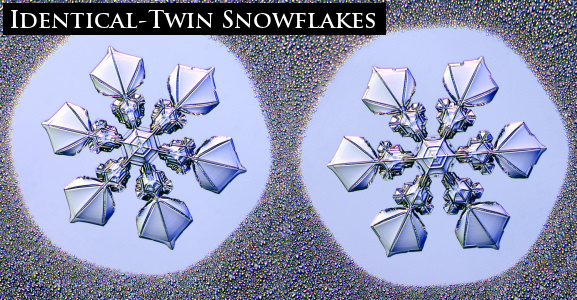 This
image shows a pair of designer
snowflakes that grew near one another. Because the two
crystals experienced the same changing growth conditions, they grew
into nearly the same shape. This
image shows a pair of designer
snowflakes that grew near one another. Because the two
crystals experienced the same changing growth conditions, they grew
into nearly the same shape.
These are real snow crystals
-- slivers of ice that materialized from water vapor in the air. In this photo
they are surrounded by a field of tiny fog droplets. You can
read more about how all this works on the designer
snowflakes page.
|
|
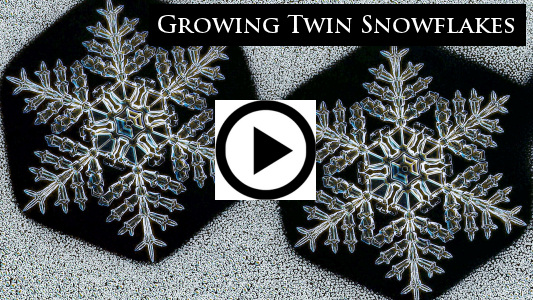 This
movie shows the growth of a pair of identical-twin snowflakes. This
movie shows the growth of a pair of identical-twin snowflakes.
High-resolution version
Medium resolution
← Low resolution
Last frame
This is not
a computer simulation, nor it is PhotoShop trickering. These are two genuine, separate snow
crystals, that I arranged to grown side-by-side in the lab.
It took 16 minutes to grow these crystals, so the movie plays about 60
times faster than real life. At the end of their growth, each crystal
measured 2.0 millimeters (0.08 inches) from tip to tip -- a bit larger
than the head of a pin.
|
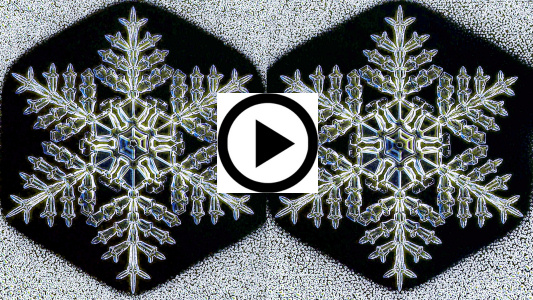 This movie shows the same pair of crystals, but displayed side-by-side to make it easier to compare their features. This movie shows the same pair of crystals, but displayed side-by-side to make it easier to compare their features.
High-resolution version
Medium resolution
← Low resolution
Last frame
What made it possible
to grow identical-twin snowflakes was the ability to grow designer
snowflakes under carefully controlled conditions. I
put a lot of time and effort into building my apparatus with
sufficient temperature control, humidity control, positioning control,
and air flow control. Once I was able to create and photograph growing
snow crystals in the lab in a well regulated environment, I was also able to grow identical-twin snowflakes.
|
|
Here are two additional examples of growing identical-twin snowflakes (in high-resolution):
|
|
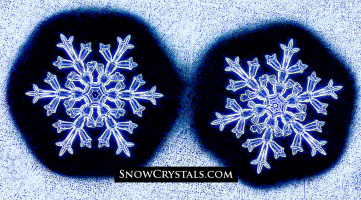 Snow
crystal symmetry requires symmetrical growth conditions. If the six
arms experience different environments, they will grow differently. Snow
crystal symmetry requires symmetrical growth conditions. If the six
arms experience different environments, they will grow differently.
Consider
this pair of identical-twin snowflakes. At this stage in their growth,
each crystal developed independently of the other. But as they grew
larger, the branches of one crystal began interfering with the branches
of the other. |
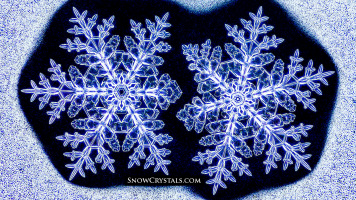 Here
are the same two crystals after some additional growth. The outer
branches grew nearly identically on both crystals, but the inner
branches had no room to grow, so they became stunted. As the arms grew
closer together, they competed for the available water vapor. Here
are the same two crystals after some additional growth. The outer
branches grew nearly identically on both crystals, but the inner
branches had no room to grow, so they became stunted. As the arms grew
closer together, they competed for the available water vapor. |
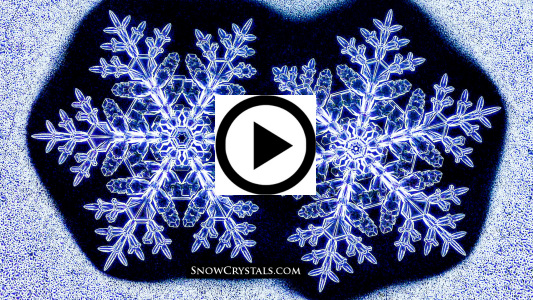 Here is a movie showing the two colliding snow crystals. Here is a movie showing the two colliding snow crystals.
High-resolution version
Medium resolution
← Low resolution |
|
Here are more examples of identical-twin snowflakes (and triplets, quartets, ...):
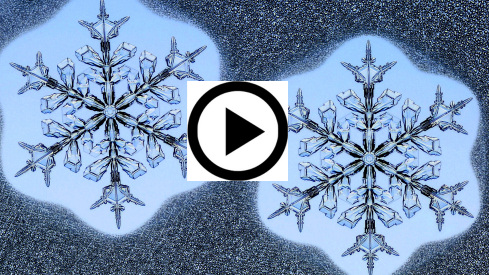 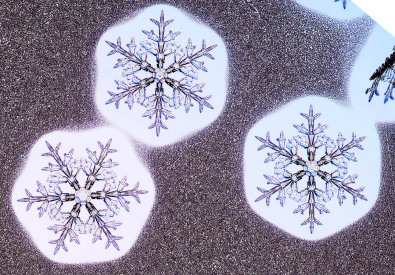
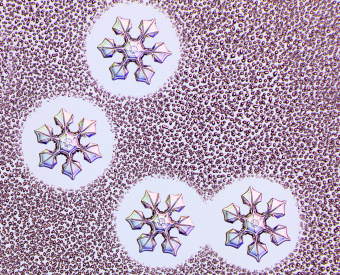 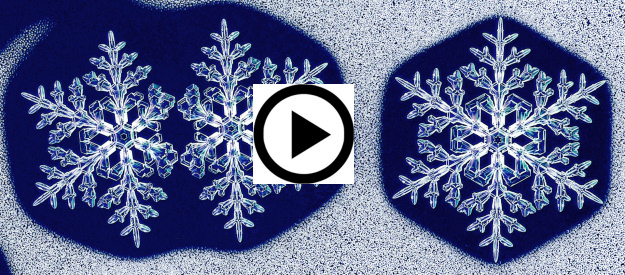
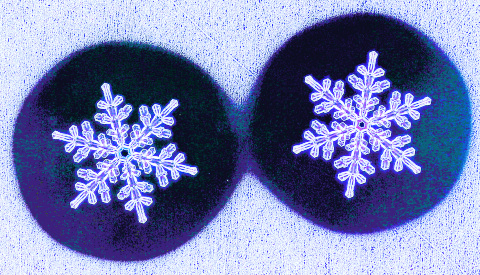 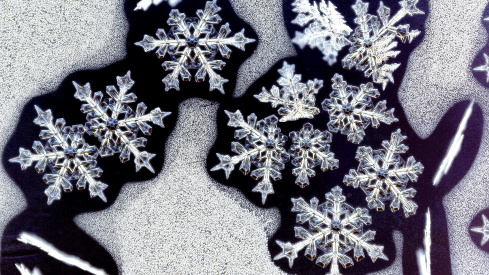
|
|
